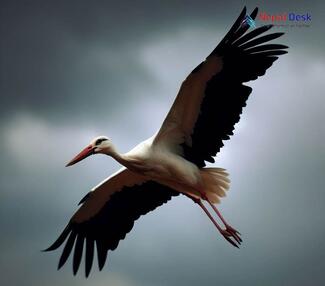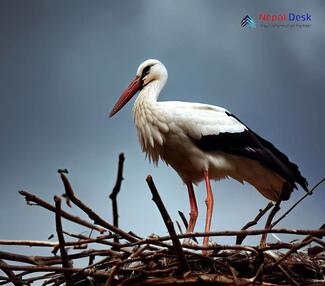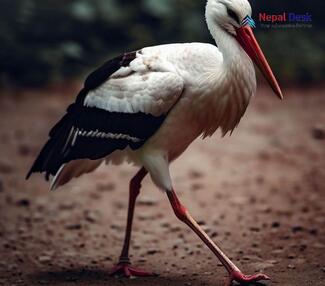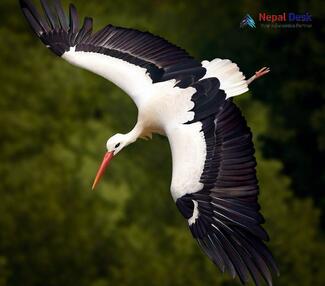The White Stork (Ciconia ciconia) is a remarkable large bird, admired for its eye-catching black-and-white feathers and lengthy, red legs. You can often spot them in open areas like meadows, marshes, and agricultural lands. These towering wading birds are famous for their extraordinary migrations between Europe, Asia, and Africa. In this article, we'll delve into the captivating features of this charismatic species and learn about its presence in Nepal.
Physical Characteristics and Behavior
Standing tall at an average height of 100-115 cm and boasting a wingspan of 195-215 cm, the White Stork is a hard-to-miss presence in its natural habitats. Their bodies are mainly white, except for the black flight feathers and red legs. Although they're usually quiet birds, during the mating season, they communicate with distinct bill-clattering sounds.
White Storks are versatile feeders with a diet that mainly includes insects like grasshoppers and locusts; however, they may also eat fish, amphibians, small mammals, or even other smaller birds on occasion. These stunning creatures typically build their nests on lofty structures such as trees, cliffs, rooftops, or power poles.
Migratory Habits
The remarkable migration journey of the White Stork is one of its most notable features. Every year around September, they set off on a long-haul trip from their breeding locations in Europe and parts of Asia to their winter homes in Africa. In springtime - around March-April - they return northward to their breeding grounds.
As they migrate, White Storks often travel in extensive flocks that could number in the hundreds or even thousands. They prefer to glide on thermal currents rather than repeatedly flap their wings to conserve energy.
Sightings in Nepal
Although not a common bird species in Nepal, the White Stork has been seen in various parts of the country. During its lengthy trips, this migratory bird sometimes stops over in Nepal, offering birdwatching aficionados an exciting chance to spot this stunning species. The ideal time to catch a glimpse of them in Nepal is between February and March, when they rest from their migration journey.
Conservation Status
Currently, the White Stork holds the status of "Least Concern" on the IUCN Red List. Nonetheless, due to habitat loss and degradation, some populations have experienced significant declines. Conservation actions such as breeding programs, nest protection, and habitat restoration are crucial to ensure the survival of this iconic migratory bird.
In summary, the White Stork (Ciconia ciconia) is an enthralling and awe-inspiring avian that embodies nature's incredible adaptability. With ongoing conservation initiatives and responsible management of their habitats, we can all hope to witness these majestic birds during their epic migrations for generations to come.




